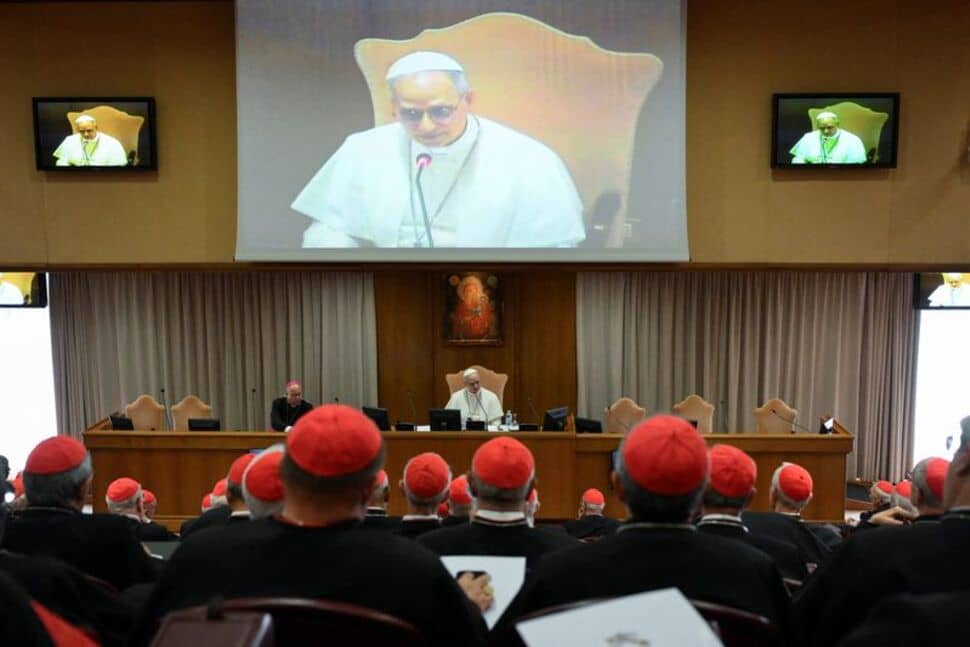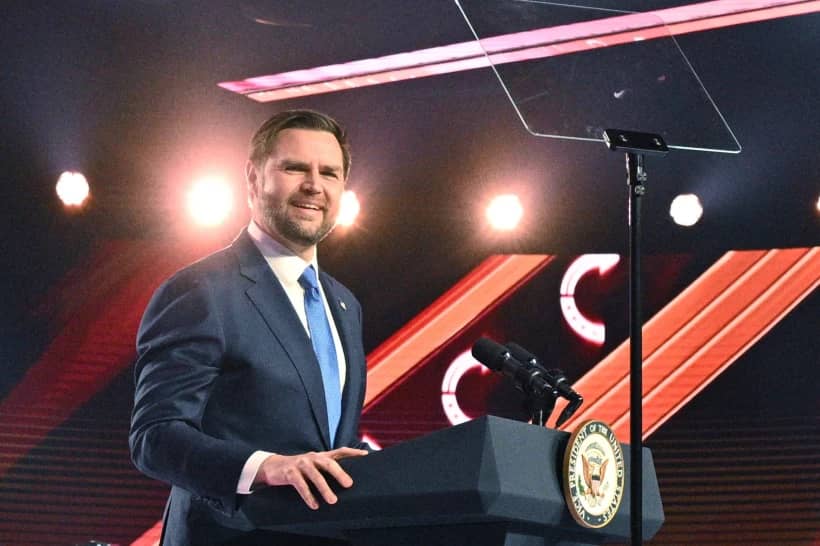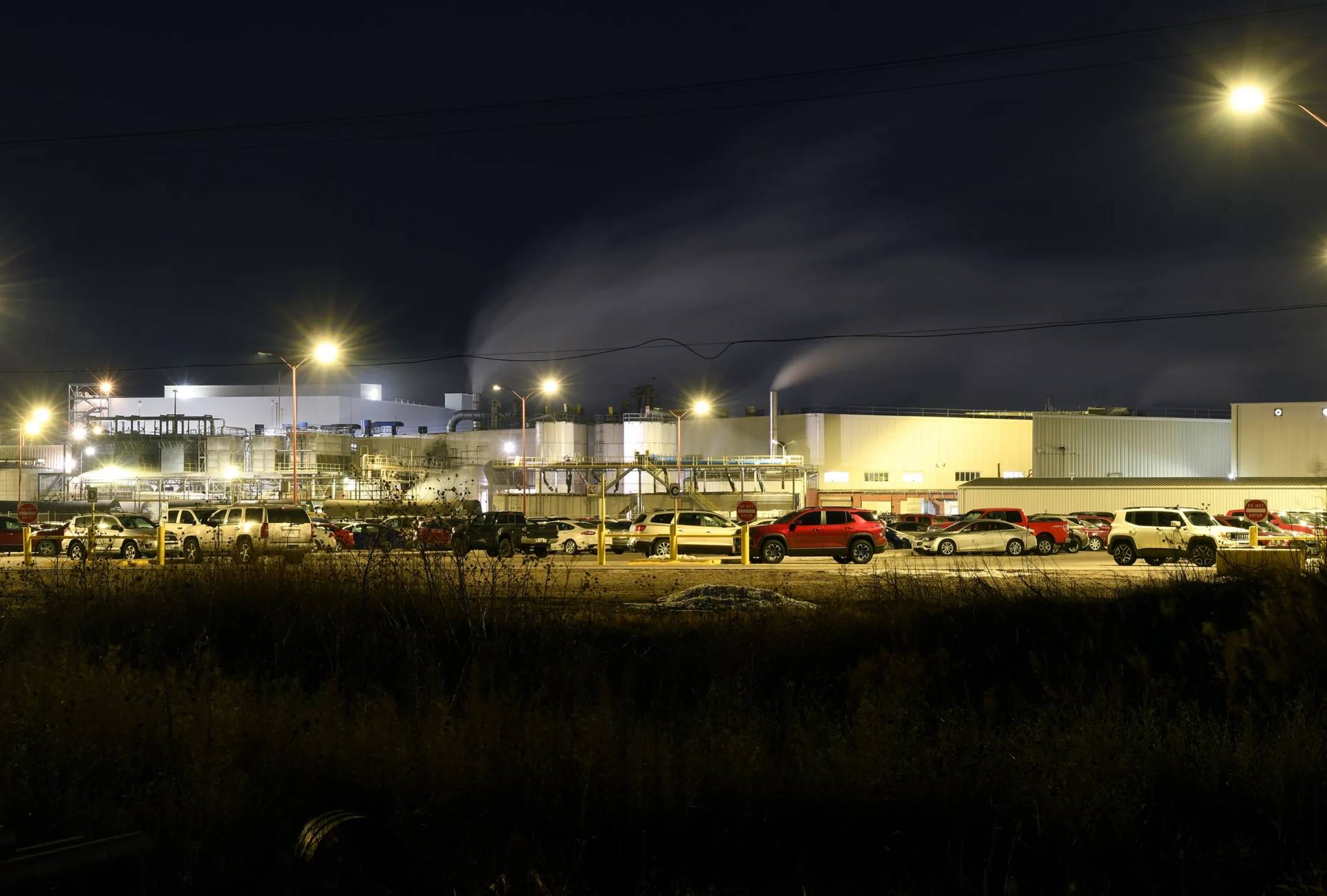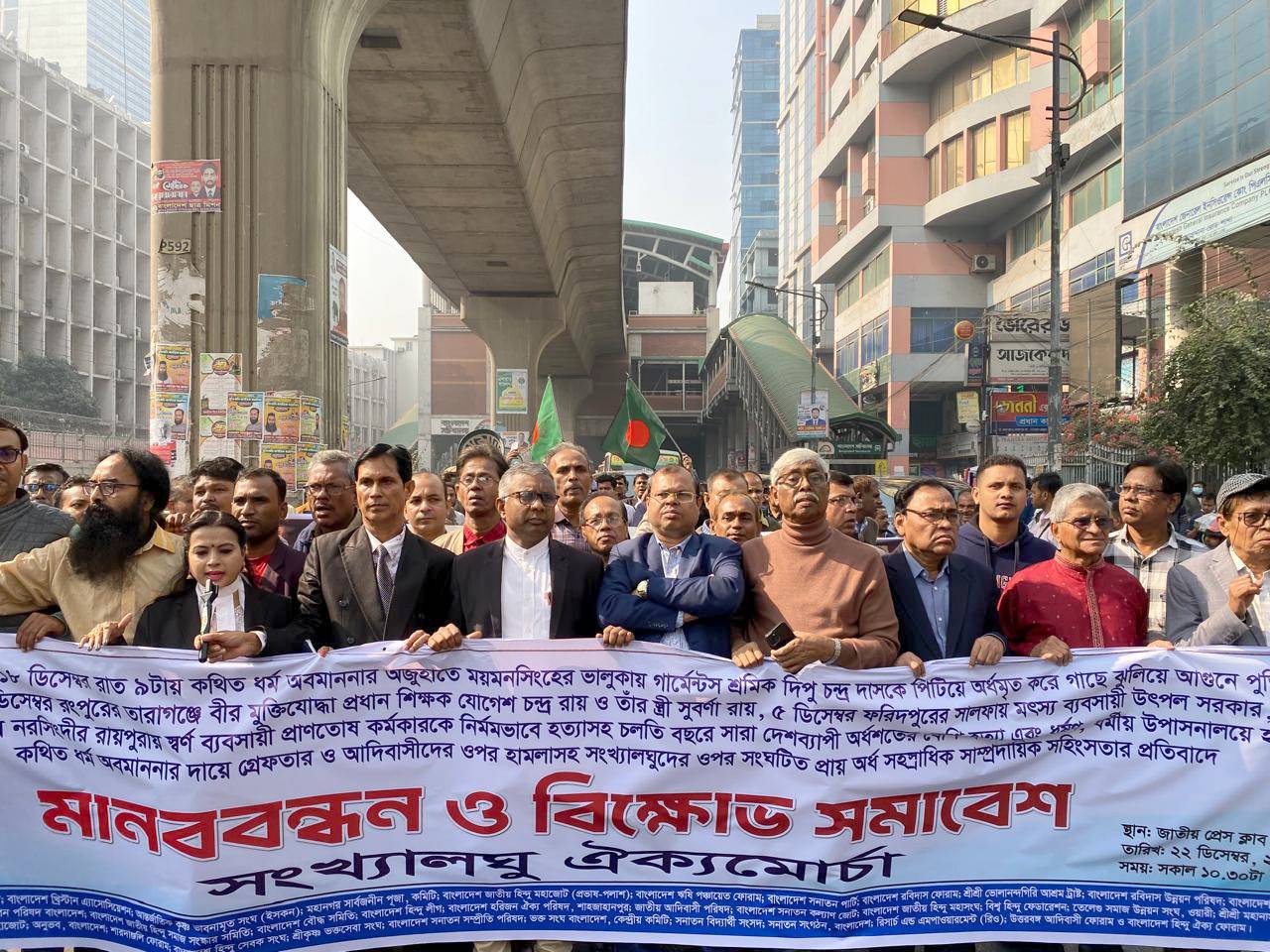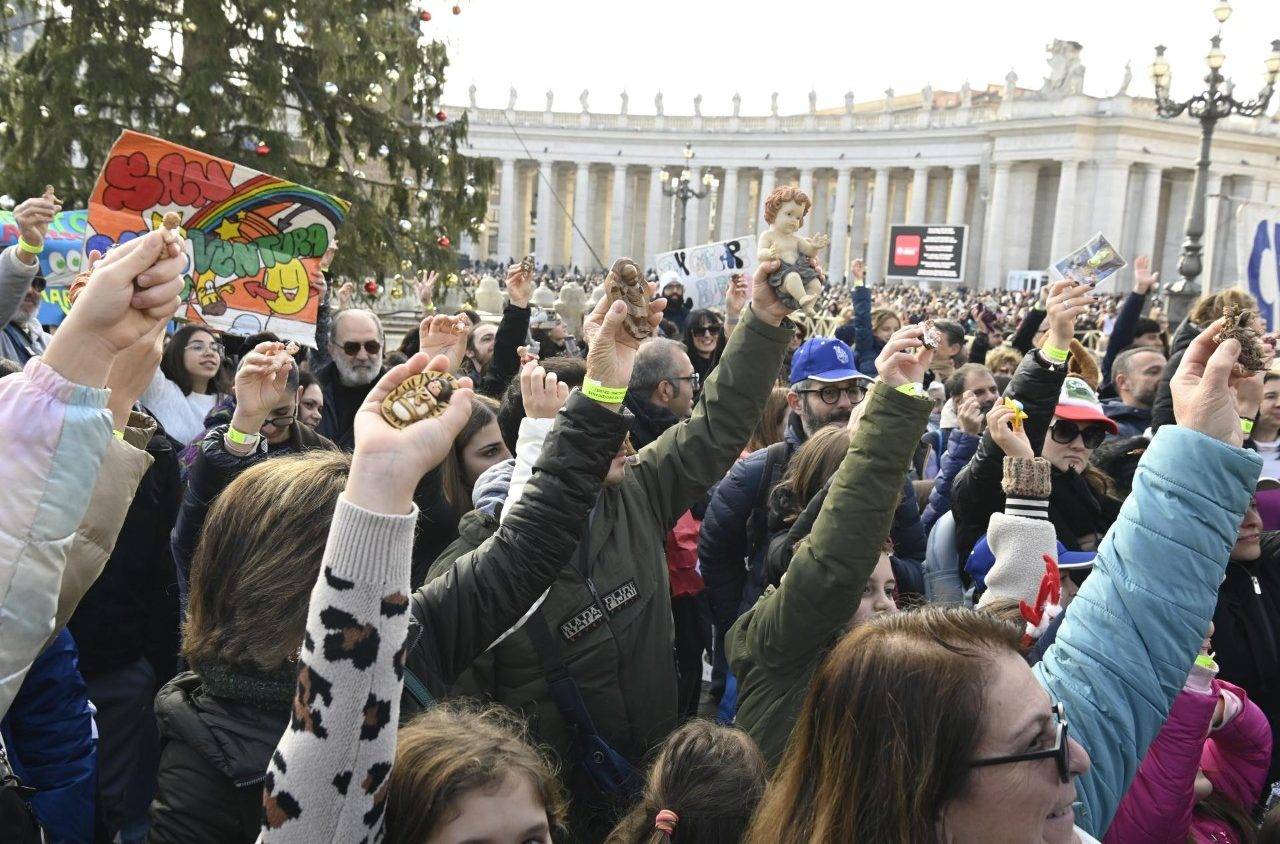ROME – Like Presidents, Prime Ministers and CEOs of all stripes, Popes rarely can be classified either as a complete success or an utter failure. Instead, a papacy almost always is a mixed bag filled with both big breakthroughs and major frustrations, perhaps even a few fiascos along the way.
In addition, papacies usually also feature a handful of enigmas – unexplained, puzzling situations that don’t appear to have any obvious explanation, and which therefore stir endless curiosity and debate.
Pope Francis is no exception. At the ten-year mark, here are four chronic question marks. Ironically, they represent a rare case of common ground in an oft-divided church, since papal allies and critics alike would love to have an explanation.
Zanchetta
One classic unanswered question for Pope Francis involves his old friend and countryman, Bishop Gustavo Zanchetta, the former bishop of the Diocese of Oran in northern Argentina, who has faced allegations of both sexual and financial misconduct, and who was convicted of the abuse of four seminarians by a civil court in Argentina in March 2022.
One of Pope Francis’s first episcopal appointments, Zanchetta was named the bishop of Oran in 2013 and would often boast of his friendship with the Argentine pope, with whom he’d worked at the Argentinian bishops’ conference.
Zanchetta resigned at the age of 53 just five years later, in 2017, at the time citing unspecified “health reasons.” He went to Spain, where he received psychological treatment. The pope then brought him to Rome and gave him a job as assessor to the Administration of the Patrimony of the Apostolic See (APSA), which manages the Vatican’s asset portfolio.
Though Zanchetta was relatively unknown to most, in 2018 allegations of both sexual misconduct and financial wrongdoing while in Oran were made public, raising the question of what exactly Pope Francis knew when he transferred Zanchetta to Rome and gave him job involving Vatican finances.
After the allegations went public, a Vatican spokesman insisted there were no abuse charges at the time Zanchetta was brought to Rome. Yet in an interview in 2019, when asked about Zanchetta, the pope himself said there had been at least one accusation prior to Zanchetta’s resignation from Oran in 2017.
As Pope Francis explained it, he brought Zanchetta over to Rome to question him about it, saying the accusation involved alleged homosexual pornography and explicit sexual images of Zanchetta on his cell phone. Zanchetta claimed his phone was hacked, Francis said in that 2019 interview, saying he believed Zanchetta and that people in the Oran diocese had had problems with their bishop because they thought he was “bossy.”
Francis ultimately put Zanchetta on leave from his APSA post while an investigation into abuse allegations was conducted in Argentina. Zanchetta was ultimately charged with the crime of aggravated continuous sexual abuse of seminarians.
He was found guilty by a court in Oran in March of last year, and is serving a four-and-half-year jail sentence. A court granted his request to serve the sentence under house arrest in a residence for retired priests, citing health issues including hypertension.
Now that Zanchetta is behind bars, the case largely has been forgotten. Yet the question still remains about what exactly Pope Francis knew and when he knew it – and, most pointedly, what it says about Francis’s broader reform agenda on sexual abuse that he still hasn’t fully addressed the unresolved mysteries surrounding such a signature case.
Role in the London deal
Another major unanswered question in the Francis papacy is his role in a murky London property deal which ended up costing the Vatican millions, and which is currently at the center of a major Vatican trial featuring 10 defendants charged with various financial crimes, including, for the first time, a cardinal.
The trial opened in July 2021 as the culmination of a two-year investigation into the Holy See’s roughly 350-million Euro investment in London real estate that went horribly wrong.
The property in question was a former Harrod’s warehouse in the upscale London neighborhood of Chelsea, which the Secretariat of State purchased in 2012 at the advice of its Italian business advisors, and which was set to be converted into luxury apartments. In the wake of Brexit the property began to lose value, costing the Vatican significant losses in hefty mortgage payments and in inflated fees to the Italian financiers.
Money for the purchase of the property was taken from the Peter’s Pence fund, an annual collection taken up in parishes to support the works of the pope, and which is widely believed to support charitable causes, rather than the Vatican’s investment portfolio.
After suffering significant initial losses on the property, the Vatican, which had purchased a 45 percent share in the property, began seeking an exit strategy that involved a generous buyout to the Italian financier who oversaw the purchase of the property.
An Italian broker named Gianluigi Torzi was brought in to craft a clean exit for the Vatican from the London property, but Torzi did so by reallocating the Holy See’s property shares in such a way that he held the majority. Torzi was eventually paid 15 million euros by the Vatican to regain control of the property shares they thought they already owned.
The Vatican’s Secretariat of State, which previously managed the Holy See’s investment portfolio, requested a hefty, 150-million Euro loan from the Vatican Bank to purchase the remaining shares in the property so the Vatican could sell it off, but that request was flagged as suspicious and an investigation was launched by the Vatican’s Financial Information Authority (AIF), now the Financial Supervision and Information Authority (ASIF), essentially the Holy See’s financial watchdog.
Ironically, the Vatican gendarmes ended up investigating AIF leadership for their investigation, and the former AIF president and director are now among the defendants in the ongoing Vatican trial, along with Torzi and a slew of other Italian businessmen and Holy See officials accused of wrongdoing in the London deal.
Notably absent from the list of defendants are any of the Vatican higher-ups who approved the London deal, including Venezuelan Archbishop Edgar Peña Parra, who serves as sostituto, akin to the pope’s chief of staff, and the Vatican Secretary of State, Cardinal Pietro Parolin.
Questions were also raised about Pope Francis’s own role in the London deal, with a key suspect-turned-star witness, Monsignor Alberto Perlasca – the Vatican official most involved in the deal, having signed all the contracts with Italian brokers – telling prosecutors during interrogation that the pope himself had authorized Vatican officials to negotiate Torzi’s payoff for the property shares.
Other witnesses in the trial had said the same thing, with Peña Parra also saying it was Pope Francis who decided to negotiate with Torzi for the shares, rather than sue him, on grounds that it would be quicker, and cheaper, and he wanted to prevent the further loss of funds on the property and move on.
Documents brought into evidence, including a memo from Peña Parra, backed that up.
Prosecutors challenged Perlasca on his version of events, saying they had heard differently from the pope, implying they had had contact with him that was neither transcribed or recorded. Prosecutors later recanted that statement, saying they were referring to public remarks the pope had made in interviews.
Amid it all, the question has remained as to what exactly Pope Francis knew about the London deal and when, whether he was fully aware of the facts when making decisions on the property, and if so, why he and his top aides, who would have approved every step along the way, are not also facing charges.
Rupnik
In what is perhaps the most painful current case for Pope Francis, several questions remain on what exactly his role was in the “Rupnik affair,” involving allegations of sexual misconduct against a famous mosaic artist and fellow Jesuit, Slovene Father Marko Ivan Rupnik.
Rupnik, 68, has been accused of sexual misconduct with nuns, as well as spiritual and psychological abuse and abuse of power, and has been barred by his Jesuit order from public ministry, and from conducting artistic activities in public.
He is one of the Catholic Church’s most renowned artists, whose murals decorate chapels and shrines around the world, including inside the Vatican.
Rupnik’s case initially made headlines in December when Italian blogs and websites reported that for years, consecrated women had accused him of spiritual and psychological abuse and sexual misconduct. The women belonged to the “Skupnosti Loyola” or Loyola Community, a religious order in Rupnik’s native Slovenia, and their allegations dated back to the 1990s, when Rupnik served there as a spiritual advisor.
After initial reports began to circulate last year, the Jesuit Order admitted that Rupnik had been briefly excommunicated in 2020 for having committed one of the church’s most serious crimes by using the confessional to absolve a woman with whom he’d had sexual relations. However, Rupnik reportedly repented of the crime and the excommunication was quickly lifted.
A year later, Rupnik was accused by nine women of sexually, psychologically, and spiritually abusing them at the Loyola Community, which he co-founded, in the 1990s.
At the time, the Jesuits recommended a canonical trial be opened, however the Vatican’s Dicastery for the Doctrine of the Faith (DDF), led by Spanish Jesuit Luis Ladaria, denied the request, refusing to lift the statute of limitations, which it has lifted in other cases, and thus declared the offenses unable to be prosecuted.
Rupnik was barred from ministry by the Jesuits after the scandals broke last year, also banning him from making any public comments, and from leaving the Lazio region where Rome is situated. They invited anyone with other claims to come forward, and, as a result, 15 new complaints were received, prompting the Jesuits last month to slap Rupnik with further restrictions.
Throughout the process, details on the Rupnik case have remained obscure, and several questions have been raised by observers as to whether Rupnik was protected by the Vatican, where a Jesuit pope reigns and another Jesuit, Spanish Cardinal Luis Ladaria, heads the office where abuse allegations are tried.
In an interview with the Associated Press in January, Pope Francis denied he had anything to do with the Rupnik case other than to intervene on a procedural note, allowing the new allegations to be considered by the same tribunal as the earlier ones.
However, that answer has not satisfied some skeptics, with the big question mark being who lifted the excommunication on Rupnik and allowed him to continue ministry. Pope Francis’s role in this case will likely continue to be a major question going forward.
Not pulling the trigger
Other equally puzzling questions for Pope Francis involve a handful of agenda items which he has not yet acted on, despite having shown keen interest in over the years.
The topic of women deacons is perhaps among the best-known, with Francis establishing a commission to study the female diaconate in 2016, in response to a question from women religious about the historical role they played in the church, and whether that role might have space in contemporary Catholicism.
When the pope established the commission, there was a buzz of excitement, with many believing it was only a matter of time before women deacons would be ordained, and that it would be a short jump from there to ordaining women as Catholic priests.
However, that 2016 commission came and went, as did a second commission with new members established by the pontiff after the 2019 Synod of Bishops on the Amazon, without any results. The failure to act – or even to explain the inaction – left many observers scratching their heads, wondering why Francis created these groups and encouraged speculation about moves he apparently wasn’t ready to make.
Another question mark is why Pope Francis has not acted on proposals for ordaining viri probati, or tested married men, as priests in response to the global vocations shortage. This proposal was one of the main talking points during the 2019 Synod on the Amazon, where the ratio of priests to faithful is far more dismal than in the West, and it was discussed so openly many thought it was a given that Francis would approve the proposal.
Yet also on this front the pope refrained from offering his approval, insisting instead on the need to better evangelize Indigenous communities in the Amazon and to foster local vocations.
Francis has also left many wondering why he has not intervened more directly in the German church’s “Synodal Way,” a multi-year consultation process launched in response to the clerical abuse crisis with the aim of fostering more collaboration among clergy and laity.
The process quickly became controversial over proposals by prominent members, bishops and lay people, calling for women’s priestly ordination, an end to priestly celibacy, contested new ecclesial governing bodies, and for blessings to be given to same-sex couples.
Several Vatican department heads have intervened in the process so far, cautioning the German bishops against stoking division and even, during the German bishops’ ad limina visit to the Vatican last November, proposing a moratorium on the entire process.
The “Synodal Way” culminated this week in a final meeting where bishops voted in favor of giving blessings to same-sex unions despite a 2021 Vatican decree signed by Pope Francis banning these blessings.
With months of letters exchanged between Vatican officials and the leader of the German bishops, and the apparently blatant disregard for the pope’s own position on same-sex blessings, many have questioned why the pope hasn’t intervened directly and simply ended the German synodal process altogether.
Follow Elise Ann Allen on Twitter: @eliseannallen






